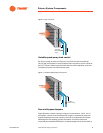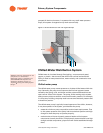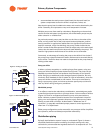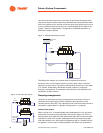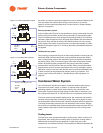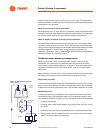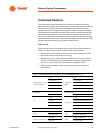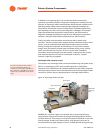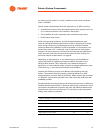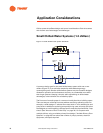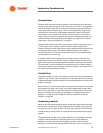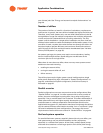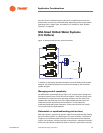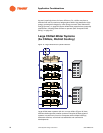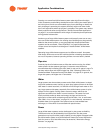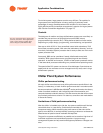
Primary System Components
SYS-APM001-EN Chiller System Design and Control 17
by reducing motor speed at “low-lift” conditions, when cooler condenser
water is available.
Certain system characteristics favor the application of an AFD, including:
• A substantial number of part-load operating hours (for example, when an
air- or water-economizer is not installed in the system)
• The availability of cooler condenser water (condenser-water reset)
• Chilled-water reset control
Chiller savings using condenser- and chilled-water-temperature reset,
however, should be balanced against the increase in pumping and cooling-
tower energy. Performing a comprehensive energy analysis is the best
method of determining whether an AFD is desirable. It is important to use
actual utility costs, not a “combined” cost, for demand and consumption
charges. It is also important to include drive maintenance and replacement
costs, since the drive life is shorter than the chiller life. See “Energy and
economic analysis of alternatives” on page 26.
Depending on the application, it may make sense to use the additional
money that would be needed to purchase an AFD to purchase a more
efficient chiller instead. This is especially true if demand charges are
significant, or if the condenser water is close to its design temperature most
of the time (e.g., in a hot and humid climate such as Miami).
Consider the following analysis of an 800-ton office building with two
chillers. The analysis compares equally priced high efficiency or AFD-
equipped chillers, as one or both of the chillers. Utility costs for the combined
or “blended” rate are $0.10 per kWh and for the actual rate are $12 per kW
and $0.06 per kWh.
Simple paybacks using the combined rate analysis show almost no difference
between the two options (Table 2). However, when utility costs with an actual
consumption and demand component are used, the difference between the
alternatives is much more pronounced. The conclusion is that using actual
energy rates matters a great deal.
Table 2. Analysis of high-efficiency chiller options with combined vs actual rates
Simple paybacks, humid climate Combined rate Actual rate
AFD on both chillers 7.2 12.7
High efficiency on both chillers 7.1 8.3
AFD on one chiller 6.1 10.8
High efficiency on one chiller 6.3 7.7



